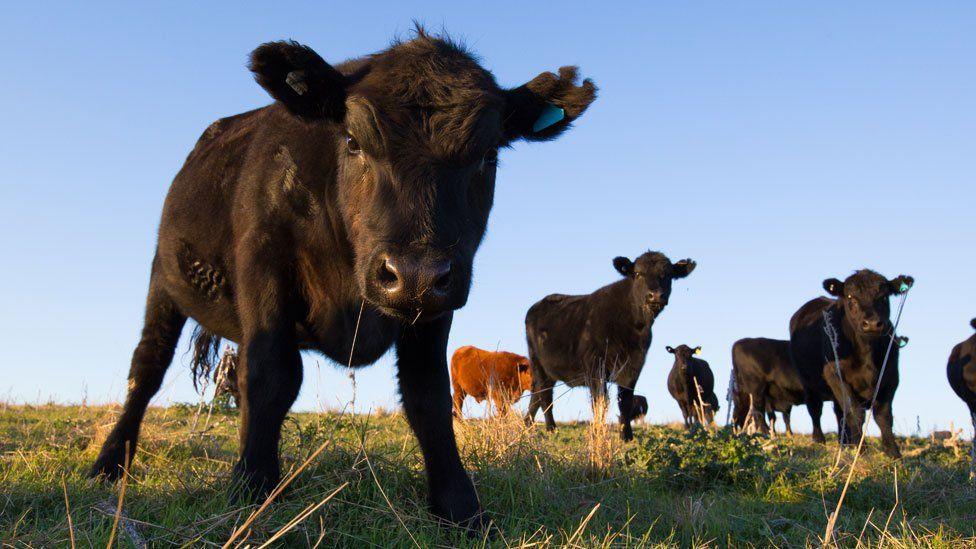'Mad cow disease' case found on farm in Scotland

- Published
A case of BSE, commonly known as mad cow disease, has been identified on a farm in Ayrshire.
The Scottish government said precautionary movement restrictions had been put in place at the farm and three other sites.
The animal did not enter the human food chain.
Food Standards Scotland said there was no risk to human health.
The Scottish government said the case of BSE (Bovine Spongiform Encephalopathy) was identified thought routine surveillance and control measures.
Further investigations to identify the origin of the disease are ongoing.
Agriculture Minister Jim Fairlie said: “The fact we identified this isolated case so quickly is proof that our surveillance system for detecting this type of disease is working effectively.
“I want to thank the animal’s owner for their diligence.
"Their decisive action has allowed us to identify and isolate the case at speed which has minimised its impact on the wider industry."
There are two types of BSE. Classical and atypical. Classical can transfer to humans who eat the meat. Scientists believe atypical occurs spontaneously and is not passed on to humans.
This is the fifth case of classical BSE to be discovered in the UK in 10 years.
Mad cow disease: What is BSE?
- Published18 October 2018
'Mad cow disease' at Scottish farm
- Published18 October 2018
Movement restrictions have also been put in place at three other sites – the farm of the animal’s origin and two farms where cows had access to the same feed.
The monitoring of BSE has been an important in the UK since the crisis of 1986 when 180,000 cattle were infected and 4.4 million slaughtered in order to eradicate the disease.
All cows over the age of four that die on a farm are routinely tested for BSE.
The disease is not directly transmitted from animal to animal, but an infected animal's offspring can be affected so are destroyed.
The last case in Scotland was in Aberdeenshire in 2018. There was a case in England in 2021.
The disease infects cows and attacks their central nervous system. It is usually fatal.
Symptoms usually include aggression and a lack of co-ordination.
Minimal risk
Scotland's chief veterinary officer Sheila Voas said any concerned farmers should seek veterinary advice.
She added: “The fast detection of this case is proof that our surveillance system is doing its job.
“We are working closely with the Animal and Plant Health Agency, and other partners to identify where the disease came from.
“I want to reassure both farmers and the public that the risk associated with this isolated case is minimal."
Ian McWatt, deputy chief executive of Food Standards Scotland said there were strict controls in place to protect consumers from the risk of BSE, including controls on animal feed, and removal of the parts of cattle most likely to carry the disease.
He said: “We will continue to work closely with Scottish government, other agencies and industry at this time.”

BSE are three letters that will send a shiver down the spine of any farmer.
The industry was devastated by the disease when it was first discovered in the late 1980s and early 90s resulting in 4.4 million animals being slaughtered and a sector on its knees.
But there's now huge knowledge about BSE and measures are in place to detect cases along with restrictions to stop its spread and prevent animals entering the food chain.
It's been largely eradicated with just five cases in the UK over the last decade. This appears to be an isolated detection in a beef cow; the same was true for the last case on a farm at Lumsden in Aberdeenshire.
I understand that the farmer in Ayrshire acted well and promptly.
But epidemiological studies will take place over the coming weeks to understand where it originated.
